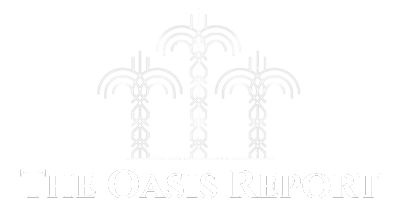Global financial markets are approaching a threshold that threatens to upend conventional economic thinking and throw the plans of international policymakers and business people into disarray – even in the well-resourced economies of the Arabian Gulf.
Largely as a result of President Trump’s chaotic policies, the yield on 10-year US Treasury bills – supposedly the safest of investible American assets – is creeping up towards 5 percent.
Most sensible economists view with trepidation the implications of the ominous “5 on 10” level – not just on the domestic US economy, but around the world.
When that barrier was breached in 2007, it was the precursor to two years of global financial convulsion. Even when it was more briefly crossed in late 2003, equity and money markets felt instant pain.
In the US, a breach of the 5 percent threshold would add to the Trumpian panic, which has not gone away since “Liberation Day” on April 2 and has been exacerbated by the deficit-increasing potential of the President’s “big beautiful bill” to cut taxes and spending.
Volatility in equities, mortgages and credit markets would be likely to spike significantly; the Federal Reserve – already under pressure from the White House – would be in an even greater quandary on interest rates; financing everywhere would become tighter on what economists see as a structural shift in capital markets.
Currency markets too would be thrown into turmoil. Would such high yields attract forex traders into the dollar? Or would the associated economic risks spark a fresh exodus out of US assets?
In the Arabian Gulf, these pressures could well be stoked by falling oil prices.
Crude has held up pretty well so far – around the mid-$60s level – despite extra Opec+ supply and (more) Trump-induced volatility in global economic demand, but most experts expect it to fall in the second half.
That of course means declining revenues from oil exports in the region and increased pressure on countries to fill the fiscal gap through international capital markets, especially in Saudi Arabia. The demand for big investment by Vision 2030 and other giga-projects in the kingdom is relentless.
The pressure of elevated borrowing costs layered over shrinking oil income could deepen deficits and constrain growth funding
Saudi Arabia, and to a lesser extent the UAE and Qatar, have increasingly tapped international markets to support their big economic diversification programmes.
In a report based on a recent visit to the region, Jason Tuvey of London consultancy Capital Economics wrote: “The fact that the kingdom has been a significant issuer of debt over the past decade means that the authorities can turn to international capital markets quickly and easily to secure financing.”
But, in the event of a “5 on 10” scenario, such funding will be more expensive to finance, and not just on US markets – GCC sovereign bond spreads have also widened for new issuers alongside widening Treasuries.
The pressure of elevated borrowing costs layered over shrinking oil income could deepen deficits and constrain growth funding.
Meanwhile, appetite for Gulf sovereign bonds appears to have slowed. Recent figures from the London Stock Exchange showed a 20 percent decline in Saudi sovereign debt issuance so far in 2025. JP Morgan, the US investment bank, has said that it is likely to pick up again in the second half of the year.
Fortunately for Gulf policymakers, there are a number of things going their way as they try to bridge the funding gap.
In Saudi Arabia, government-related entities such as the Public Investment Fund and Saudi Aramco can be trusted to come up with funds, for example via sales of PIF assets or a further sale of shares in Aramco.
In the UAE, having survived existential threat at the time of the global financial crisis, the public finances are in better shape, with significant debt repayments in Dubai spread over a manageable repayment schedule.
Further complicating the calculus for regional financial policymakers is the fact that both Saudi Arabia and the UAE are themselves big holders of US Treasury bills, though they have been heading in opposite directions recently.
The UAE has raised its holdings to a record value of $120 billion according to the most recent data, just a little off the level of the kingdom’s $126 billion portfolio, which has been steadily reduced.
Which way would the two Gulf governments go in the event of a “5 on 10” situation? The temptation, for Saudi Arabia at least, would surely be to raise further cash for domestic investment, regardless of the geopolitical consequences.
Frank Kane is Editor-at-Large of AGBI and an award-winning business journalist. He acts as a consultant to the Ministry of Energy of Saudi Arabia



